Here are answers to the most common questions English speakers have about basic Korean. They’ll help you communicate in any situation.
You’ll learn how to:
- Say hello and goodbye
- Ask for things politely
- Introduce yourself and others
- Make friends easily
- Flirt in a non-creepy way
- Express feelings and emotions naturally
- Argue like a local
I’ve worked for 10 years as a translator, and can help you express yourself as an English speaker with Korean words you need to know.
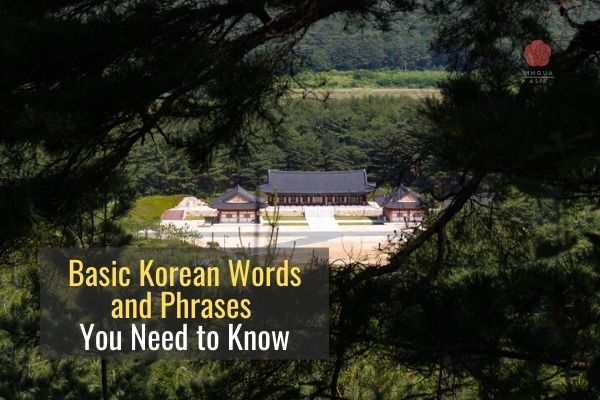
Even easy Korean words and phrases have levels of formality. We’ve divided them into two categories to keep things simple:

Coworkers, your boss, your parents, older relatives and strangers

Friends, significant others and younger people
There’s more nuance to the language than this, but you’ll sound natural if you can get these down.
Don’t stress too much, because Koreans won’t expect you to be perfect. They’ll be happy you’re trying!
The easiest way to learn Korean is to start speaking the words out loud.
Here are the most common words and phrases in Korean with English pronunciation in parentheses (they’re written how they sound instead of the Romanized version, which can be inaccurate). You can read the Korean out loud to get used to pronouncing it. Then, you won’t get tongue-tied in front of someone.
Saying hello and goodbye
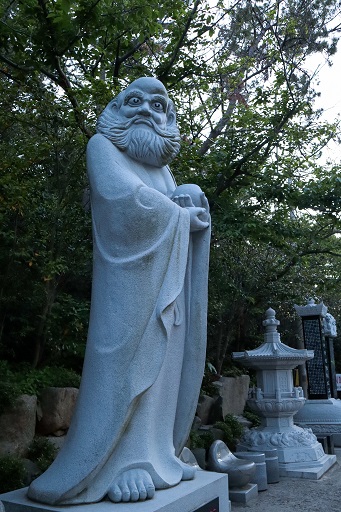
Greetings in Korea are more formal than in western countries. Once you get to know someone around your age, you can start dropping honorific endings like 요 (yo) and 입니다 (ibnida), which add respect.
What is “hello” in Korean?

안녕하세요 (annyeong haseyo)
How you say hello in Korean. It’s the most common and polite greeting you’ll use most of the time. It also doubles as “how are you?”. When in doubt, use this phrase when you encounter someone.
What is “hi” in Korean?

안녕 (annyeong)
Annyoung means an informal greeting you’d use among friends. It also works as goodbye as you’ll see later.
What is “hey” in Korean?

야 (yah)

헤이 (hey ee)
You can actually just say “hey” now, since it became trendy after people started using it on an entertainment show. Yah is reserved for the closest of friends or soon to be enemies.
What is “good morning” in Korean?

좋은 아침입니다 (joeun achim ibnida)
A not-so-common greeting you can use to spice things up with your coworkers.
What is “morning” in Korean?

좋은 아침 (joeun achim)

굿모닝 (good mo-ning)
This is more common when used among friends.
What is “good afternoon” in Korean?

좋은 하루 보내세요 (joeun haru boneseyo)
There’s no “good afternoon” greeting in Korean, but you may use this phrase when saying goodbye during the day. It wishes someone a good day. There’s a similar version below that’s basically interchangeable.
What is “good night” in Korean?

안녕히 주무세요 (annyeonghee joomooseyo)
This is uncommon as you use it for your grandparents or parents.
What is “sleep well” in Korean?

잘자 (jalja)

굿나잇 (good night)
Best used for ending late night conversations. Can be for friends as well as people you’re dating. It doesn’t always have a romantic connotation, but it easily can.
What is “goodbye” in Korean?

안녕히 계세요 (annyeonghee gyeseyo) – you’re leaving

안녕히 가세요 (annyeonghee gaseyo) – they’re leaving
These seem a bit tricky, but just remember that 계 (gye) means they’re staying and 가 (ga) is when they’re leaving. These are actually the beginnings of common verbs you’ll see often. When in doubt, just say 들어가세요 (deureo gaseyo).
What is “bye” in Korean?

안녕 (annyeong)

잘가 (jalga)
The best ways to say bye to friends and significant others. The only difference is jalga is when the other person or both of you are leaving.
What is “have a nice day” in Korean?

좋은 하루 되세요 (joeun haru dwoeseyo)
You may use this phrase when leaving during the day. You’ll hear this mostly from store owners and staff. The customer doesn’t use it, but you can make someone happy by doing so and maybe even get some subeesu.
What is “see you next time” in Korean?

다음에 봬요 (daumeh bwoeyo)
Great for acquaintances.
What is “later” in Korean?

다음에 봐 (daumeh bwa)
Works well for friends.
What is “see ya, wouldn’t want to be ya” in Korean?

잘먹고 잘살아 (jalmeokgo jalsara)
Yes, you’ll get the same reaction as you would with the English version, which would be a groan, internally or externally. This is often used while breaking up with someone.
Introducing yourself in Korean

Here are some easy ways to introduce yourself in Korea. You will use the same level of formality, because you don’t know the person. Only after you become familiar do levels of speech change.
Koreans don’t exchange names as often as westerners. I’ve gone years without knowing someone’s name. Only social situations among friends, or professional ones with coworkers and students require introductions.
The most common things you’ll be asked in this situation are your name, your age, your place of origin and your marital status. These establish hierarchy and how you will address each other. Once you know these, you’ll be semi-fluent in Korean!
What is “nice to meet you” in Korean?

만나서 반갑습니다 (mannaseo bangapseubnida)

처음 뵙겠습니다 (cheoeum bwebgetseubnida)
Nice to meet you in Korean will work for any situation, especially when meeting your boss or older people.
What is “it’s a pleasure” in Korean?

반갑습니다 (bangapseubnida)
This is still formal enough but good for social situations among peers.
What is “name” in Korean?

이름 (ireum)

성함 (seongham)
Ireum is a common way of saying “name” in Korean. There others such as 성함 (seongham) but you won’t need this level of formality when you’re first learning the language.
The funny thing is, Koreans think English names are long since Korean ones are three syllables or less. You might struggle to fit your name on forms or your ARC (Alien Registration Card). This is one of the fun and/or frustrating cultural differences you’ll notice in Korea.
What is “my name is” in Korean?

___ 입니다 (___ ibnida)
For example, if you want to say your name is Jane, it’s simply “Jane ibnida”. No need to use the word ireum as you’ll sound like a textbook.
What is “I am (nationality)” in Korean?

___인이에요 (___ in eeyeyo)
You’re basically saying you’re a (country name) person. For example, 미국인이에요 (migookin eeyeyo) means “I’m an American person”.
What is “me” in Korean?

저 (jeo)

나 (na)
A humble way of saying “me” in Korean is “jeo”. It will be “저는 (jeoneun)” or “제가 (jega)” in sentences. It’s the default when you’re talking to people outside your peer group.
A casual way of “me” is “na”. You can say “나는 (naneun)” or “내가 (naega)” while talking to friends.
What is “you” in Korean?

너 (neo)
This can be a tough one for English speakers, because there’s no universally accepted word for “you” that works in every situation. You can call everyone from the president to a baby “you” in English and be totally fine.
In Korean, there are many ways to say this depending on the situation.
- 너 (neo) is too strong and familiar and will offend most people. This is reserved for the closest friends and children.
- 당신 (dangshin) is an interesting one because if you say it to your wife it means, “darling”, but if you say it to someone on the street it’s almost like calling them a “b****”.
- 본인 (bonin) works in a pinch and is polite enough not to draw someone’s ire. At the same time, this can be also used in a quarrel if you want to sound elegant.
- 선생님 (seonsaengnim) means teacher, but is suitable for adult acquaintances and people on the street. But, you wouldn’t call a child this.
Koreans normally call people by their title or name with 씨 (ssi) at the end. In other words, the best way to say “you” in Korean is to avoid it.
What is “age” in Korean?

연세 (yeonse)

나이 (nai)
The common ways to say “age” in Korean.
“How old I am” in Korean?

___살이에요 (___ sal eeyeyo)
This basically means I’m ___ years old.
What is “hometown” or “place of origin” in Korean?

고향 (gohyang)
Gohyang means hometown.
What is “I’m from” in Korean?

___출신이에요 (___ choolshin eeyeyo)

___에서 왔어요 (___ ehseo wasseoyo)
Choolshin literally means place or country of origin. For example, you can say “Canada choolshin eeyeyo” or “Canada ehseo wasseoyo” to say you’re from Canada.
What is “single” in Korean?

미혼 (meehon)

솔로 (solo)
Meehon literally means unmarried. Young people say “solo” to mean single in Korean.
What is “married” in Korean?

결혼 (gyeolhon)
The most frequently used way to say married in Korean.
What is “I’m single” in Korean?

미혼이에요 (meehon eeyeyo)
It’s more common for them to ask if you’re married and you to say that you’re not married to express that you’re single.
What is “I’m married” in Korean?

결혼했어요 (gyeolhon haesseoyo)
There are other ways to say “I’m married” that very old people use, but this will cover most situations.
Hidden Culture
You might be wondering at this point what the difference is between ~요 (yo) and ~입니다 (ibnida) endings. Yo is slightly less formal, but still acceptable in most situations with older people. Ibnida is the highest level of formality that’s often used at work or in the army.
When you first start learning Korean, don’t overthink endings and focus on using the language. It’s the fastest way to get fluent.
Most Koreans are in such a hurry that they don’t listen to everything you say, so just get talking.
Asking for things
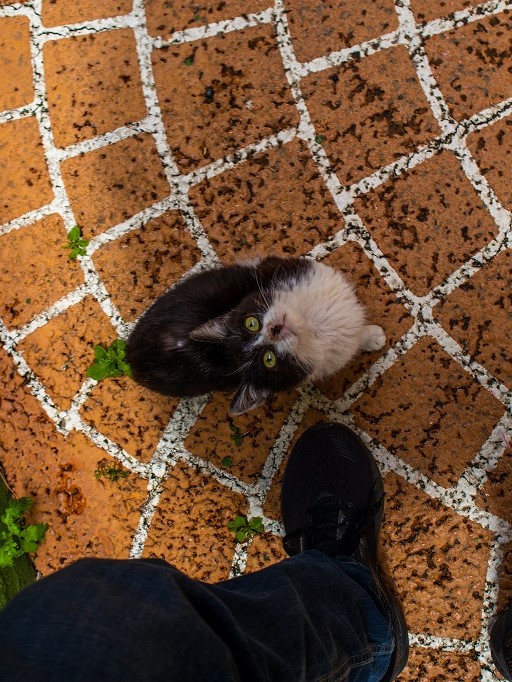
It’s pretty easy to get what you want, once you know a few verbs. Korea has a strong service culture where the customer is “king”.
But, asking for special orders at a Korean restaurant is uncommon. In other words, you get what you get. If you have a special request like meatless Kimchi jiggae, it’s best to go an actual vegetarian restaurant instead of asking them to hold it.
You’ll use these terms to order in restaurants and cafes, and give directions to taxi drivers when you first arrive in Korea.
I left out most of the phrases asking for directions in Korean, because nearly everyone has a smartphone and locals will sometimes guide you to a place if you ask in English.
What is “yes” in Korean?

네 (ne)
네 (ne) is the most commonly used Korean word. You can also say it during active listening when someone talks.
What is “OK” in Korean?

응 (ung)
오케이 (OK)
OK and ung are informal ways to answer affirmatively in Korean. You can also say “어 (uh)” between friends.
What is “no” in Korean?

아니요 (aniyo)
아뇨 (anyo)
Aniyo or anyo are polite ways to say no in Korean.
What is “nope” in Korean?

아니 (ani)
Ani is best used among friends and children.
Surprisingly, a lot of Koreans add “ani” to begin a sentence that doesn’t necessarily mean no.
What is “thank you” in Korean?

감사합니다 (gamsa habnida)
The most common way to say thank you that works in most situations.
What is “thanks” in Korean?

고마워 (gomawo)
땡큐 (ddangkyu)
Gomawo is best used among lovers, friends and children. People also say 땡큐 (ddangkyu) in Korean so that makes it easier.
What is “you’re welcome” in Korean?

아니에요 (anieyo)
You might have seen 천만에요 (cheonmanehyo) in textbooks, but no one uses it! Anieyo just means something close to “don’t mention it”.
What is “excuse me” in Korean to grab attention at a store or restaurant?

여기요 (yeogiyo)
저기요 (jeogiyo)
These are both used to call someone’s attention to you politely. If you see a “call bell (벨 or 호출벨)” on the table at a restaurant, you can push it instead!
What is “give” in Korean?

주다 (jooda)
Jooda is the infinitive form of the give verb in Korean. You have to conjugate it as below to ask for something politely.
What is “please give me” in Korean?

____ 주세요 (jooseyo)
Juseyo is might of how you’ve seen this written in English, but it has more off an “oo” sound like “food”. Using this after saying a menu item is 80% of the work of ordering at restaurants.
What is “do” in Korean?

하다 (hada)
This is the infinitive version of the do verb in Korean. It’s used at the end of numerous verbs.
What is “please do” in Korean?

하세요 (haseyo)
Haseyo isn’t all that polite in most situations. The phrase below is much better.
What is “please do for me” in Korean?

해주세요 (haejooseyo)
This works very well in many situations, such as when you want someone to heat up your sandwich or do anything else for you. You might notice that the hada verb is conjugated at the beginning, which comes in handy in a few other situations.
What is “go” in Korean?

가다 (gada)
Gada is the infinitive form of the verb go. It’s also a very common word that can be found at the end of many other verbs.
What is “please go” in Korean?

가세요 (gaseyo)
This isn’t that polite when said to a taxi driver. The form below is the standard way of asking someone to take you somewhere.
What is “please take me to” in Korean?

가주세요 (gajooseyo)
Gajooseyo, like haejooseyo, is great for politely asking someone to do something for you. In this case, you’ll most likely say this to a taxi driver. For example, you can say “Seoul yeok gajooseyo” if you want them to take you to Seoul station.
What is “right” in Korean?

오른쪽 (ohreunjjok)
Right as in right hand side.
What is “left” in Korean?

왼쪽 (woenjjok)
Left as in left hand side.
What is “straight” in Korean?

직진 (jikjin)
쭉 (jjook)
Straight as in the direction.
What is “and” in Korean?

그리고 (geurigo) – to start a sentence
~랑 (rang) – at the end of a word to connect it to another.
These are the easiest ways to say “and” in Korean. You can add them to items when you order. For example, say “americano rang cha jooseyo” to order both black coffee and tea.
What is “but” in Korean?

하지만 (hajiman) or ~지만 (~jiman)

근데 (geunde)
You can use this between sentences to express the conjunction “but” in Korean. For example, “I like coffee in the morning, but tea is good at night” will be “아침에는 커피가 좋지만 밤에는 차가 좋아요. (achimehneun coffeega jochiman bhamehneun chaga joahyo)”.
“What time is it” in Korean

몇 시예요? (myusshi yeyo?)

몇 시야? (myusshiya?)
The most common ways to ask what time it is in Korean.
What is “food” in Korean?

음식 (eumshik)
밥 (bap) – literally rice
Two of the easier ways to say food. There are many expressions based on the word bap.
What is “please” in Korean?

제발 (jebal)
Jebal is an extreme form of “please” more akin to begging. This is when you want a huge favor and are desperate.

Excusing yourself and being polite
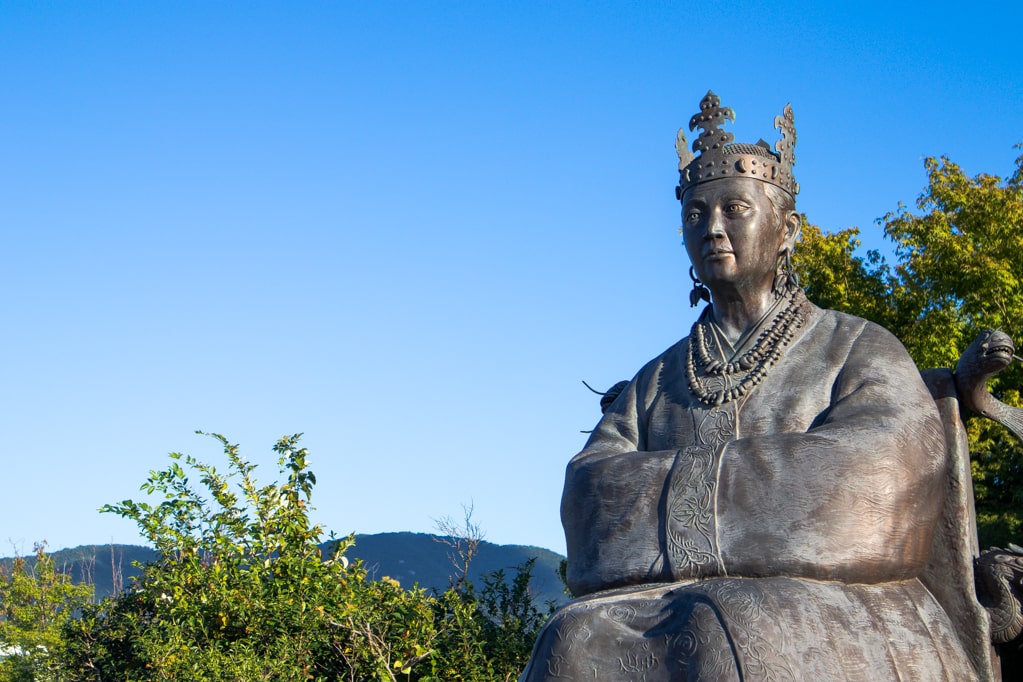
Korea has more extreme forms of being polite that what you’re used to. They can be overly polite to people in a higher position and dismissive to those unknown to them.
In public, you don’t say “excuse me” as often as you would in a western country, even if you make physical contact. This can be jarring for new arrivals in Korea, and there’s the temptation to take things personally. I can assure you as a Korean that this is normal for everyone.
What is “excuse me” in Korean?

잠시만요 (jamshimanyo) – when you want to pass
지나갈게요 (jina galgeyo) – “coming through”
You can normally just squeeze through a group of people, but these might get them to move.
What is “just a moment” in Korean?

잠깐만요 (jamgganmanyo)
Koreans are often in a rush. You can use this when you need more time to decide what to order in a cafe or restaurant.
What is “sorry” in Korean?

죄송합니다 (jwesong habnida)
The most humble and respectful way to say “sorry” in Korean. It’s only reserved for the deepest offenses, like if you accidentally knocked someone down in the street or made a huge mistake at work.
What is “my bad” in Korean?

미안해 (mianhae)
미안 (mian)
Mianhae is an informal way to say “sorry” in Korean. It’s good for light offenses among friends or significant others.
What is “are you OK?” in Korean?

괜찮으세요? (gwenchaneuseyo?)
괜찮아요? (gwenchanayo?)
This is a versatile phrase that can be used when someone looks distressed or if you accidentally caused harm.
What is “it’s OK” in Korean?

괜찮아요 (gwenchanayo)
You can use this when you want to say you’re OK or if a restaurant has run out of the dish you ordered.
What is “OMG” in Korean?

어머 (uhmuh)
헐 (heol)
Uhmuh or omo is an expression of surprise when you make contact with someone unknowingly. Heol is more commonly used among friends.
What is “I don’t understand” or “I don’t know” in Korean?

모르겠어요 (moreu gesseoyo)
몰라요 (mollayo)
These are the shortest and easiest ways to politely say you don’t understand or know. They can get you out of a lot of sticky situations, especially as a foreigner.
What is “no idea” in Korean?

몰라 (molla)
Molla is fine between friends.
What is “speak slowly” in Korean?

천천히 얘기해주세요 (cheoncheonhee yaegi haejooseyo)
Koreans speak quickly, so you might have to ask this in the beginning. Whether they oblige or not depends on the person.
What is “can you repeat that?” in Korean?

다시 한번 말해주세요 (dashi hanbeon malhaejooseyo)

뭐라고? (mworago?)
It’s alright to ask people to repeat themselves, even when you’re fluent in Korean.
What is “after you?” in Korean?

먼저 가세요 (meonjeo gaseyo)
You won’t do this often in Korea, especially in Seoul. If you’re too polite, you won’t get a seat on the subway and the bus might leave without you.
Asking questions in Korean
Questions and answers are often the same. For example, 밥 먹었어? and 밥 먹었어 are “did you eat?” and “I ate” respectively. Make sure to end with a high tone when asking a question to make things clear.
Questions like “how are you?” are uncommon in Korean. Also, younger people will generally be more reluctant to ask you questions.
“Who” in Korean?

누구 (noogoo)
The standard word for “who” in Korean.
“What” in Korean?

뭐 (mwo)
The standard word for “what” in Korean.
“Where” in Korean?

어디 (uhdi)
The standard word for “where” in Korean.
“When” in Korean?

언제 (uhnjae)
The standard word for “when” in Korean.
“Why” in Korean?

왜 (wae)
The standard word for “why” in Korean.
“How” in Korean?

어떻게 (uhddeokae)
The standard word for “how” in Korean.
“How many” in Korean?

몇개 (myutgae)
The standard word for “how many” in Korean.
Making friends in Korean
Making friends in Korea is usually done from elementary school to university. It may be tough as a college graduate to meet people, but there are many events for expats and Koreans that you can attend, such as language exchange.
Many Koreans, especially younger ones, are open to meeting non-Korean people. They’ll often have a decent command of English, so you can learn as you go.
The following assume a level of familiarity between you and the person you’re talking with.
What is “let’s speak casually” in Korean?
말 놓을까? (mal noeulkka?)
말 놓자 (mal nocha)
This is a major landmark on the road to friendship in Korea. Once you or someone around your age says this, you can drop formalities and get closer a lot quicker. This will happen naturally if you hit it off.
What is “friend” in Korean?
친구 (chingu)
Chingu is the most common word for friend. There’s even a good gangster movie with the same title that I recommend.
What is “close/good friend” in Korean?
친한 친구 (chinhan chingu)
Harder to make as you get older, but not impossible.
What is “best friend” in Korean?
베프 (behpeu)
Short for “best friend” in Korean pronunciation. Koreans also use “찐친 (jjinchin)“, which means “real/true friend”.
How to say “you are” in Korean?
___이다 (eedah)
___이야 (eeya)
You can use these to talk about others. For example, you can say “착하다 (chakhada)” for “you are nice”.
What is “long time no see” in Korean?
오랜만이야 (oraenmaneeya)
Say this when you haven’t seen someone you’re close to for a while.
What is “how have you been?” in Korean?
어떻게 지냈어? (uhddeokae jinaesseo?)
잘 지냈어? (jal jinaesseo?)
These make for good small talk when seeing someone again.
“What are you doing” in Korean?
뭐해? (mwohae?)
This is a good and light conversational topic. It can lead to a meet up as well if you’re nearby.
What is “today” in Korean?
오늘 (oneul)
The common word for “today” in Korean. You can add this to the beginning of the previous question to assess availability.
What is “tomorrow” in Korean?
내일 (naeil)
The common word for “tomorrow” in Korean. You can add this to the beginning of the previous question to make plans the following day.
What is “yesterday” in Korean?
어제 (uhjae)
The common word for “yesterday” in Korean. You can add this to the beginning of the previous question and change the ending to past tense (어제 뭐 했어? uhjae mwo haesseo?) to make conversation.
What is “cool” in Korean?
멋지다 (meotjeeda)
멋있다 (meoshidda)
These work for people, places and things. You can call your friend this when they do something cool.
What is “let’s eat” in Korean?
밥 먹자 (bab meokja)
The easiest way to make friends in Korea is by sharing a meal. Once you know if someone’s free, you can say this to them.
What is “I’ll eat well” in Korean?
잘 먹겠습니다 (jal meokgetseubnida)
잘 먹을게 (jal meogeulge)
You say “잘 먹겠습니다 (jal meokgetseubnida)” right before you eat in any situation. Similar to “itadakimasu” in Japanese. On the other hand, you can say “잘 먹을게 (jal meogeulge)” if the meal is on your friend.
What is “I ate well” in Korean?
잘 먹었습니다 (jal meogeotseubnida)
잘 먹었다 (jal mogeotda)
You say “잘 먹었습니다 (jal meogeotseubnida)” right after you eat in general. Similar to gochisousama deshita in Japanese. You can also say “잘 먹었다 (jal mogeotda)” to your friends.
What is “thanks for the meal” in Korean?
잘 먹었어 (jal mogeosseo)
Koreans will buy you a meal if they like you and want to be friends. You can say this directly to the person after they pay. You can reciprocate by buying them coffee after or a meal next time.
What is “delicious” in Korean?
맛있다 (mashitda)
맛있어 (mashisseo)
These are good ways to show how much you enjoy a meal.
What is “let’s go” in Korean?
가자 (gaja)
An informal way to say let’s go in Korean. You can say this when you’re changing venue on a night out.
Koreans also say “가즈아 (gazua)”, which is a new word created from cryptocurrency trend.
What is “let’s grab a drink” in Korean?
한잔 하자 (hanjan haja)
A light way to suggest plans with people. This also works when trying to go on a date with someone.
What is “beer” in Korean?
맥주 (maekjoo)
The common way to say beer in Korean.
What is “cheers” in Korean?
건배 (gunbae)
There are many ways to say cheers in Korean. This is similar to the Chinese word, ganbei and Japanese word kanpai.
What is “good luck” in Korean?
행운을 빌어 (haengooneul bireoh)
Not so commonly used because it’s long. Koreans also simply say “굿럭”, which literally means good luck in Korean pronunciation.
What is “cheer up” in Korean?
화이팅 (hwaeeting)
This is a multipurpose word that can be used to cheer someone up when they’re down or even wish them good luck. It also can mean “go get em” at a sporting event.
What is “birthday” in Korean?
생일 (saengil)
The casual way to say birthday between friends.
What is “Happy Birthday” in Korean?
생일 축하해 (saengil chookhahae)
The perfect thing to say to a friend on their birthday. Koreans even have their own Happy Birthday song.
What is “Happy New Year’s” in Korean?
새해 복 많이 받아 (saehae bok manhi badah)
The common way to say “Happy New Year’s” to Koreans. Locals also say “해피 뉴 이어”.
What is “Merry Christmas” in Korean?
매리 크리스마스 (merry keuriseumaseu)
One way to say “Merry Christmas” in Korean.
What is “have a nice day” in Korean?
좋은 하루 보내 (joeun haroo bonae)
This is often written on Kakao Talk messages between friends.
Hidden Culture
Koreans don’t do sarcasm the way that westerners do. If you say something, but mean the opposite, they’ll take your words at face value. They do have their own version of playful Korean sarcasm among friends.
Dating in Korean
Dating is more conservative than what you might be used to. Do not initiate physical contact on the first date, unless you trip and fall accidentally into their arms like in a K-drama. A simple wave at the beginning and end will do.
Also, it’s customary for the guy to text that night after receiving a phone number or KakaoTalk ID. Text after a date to see if the girl got home alright. Waiting a few days is interpreted as you being uninterested or uncaring.
Keep things formal until one of you gives permission to speak comfortably. The following are casual except for the first one giving permission to be casual. To get to the point of using these phrases, a lot of the ones from the previous section on making friends will work.
What is “You can speak comfortably” in Korean?

말 편하게 하셔도 돼요 (mal pyeonhageh hashyeodo dwoeyo)
말 놓으세요 (mal noeuseyo)
This is a good sign if you hear this from a romantic interest. It means they’re comfortable with you. It doesn’t guarantee a relationship, but you’ll at least be friends.
What is “date” in Korean?
데이트 (daeiteu)
You must walk before you run. Take things slowly when dating in Korea. One night stands do happen, but not with someone you meet through your social circles. A date with the following activities is a good way to start a relationship.
What is “dinner” in Korean?
저녁 (jeonyeok)
A dinner is a standard first course of dating in Korea.
What is “movie” in Korean?
영화 (younghwa)
Movies are even more standard date fare in Korea than in other countries. In fact, two men seeing a movie together is viewed as sad since it’s assumed that they couldn’t secure a date.
What is “dance” in Korean?
춤 (choom)
A less common date activity, unless you’re learning salsa or some other form of dancing.
What is the “drink” verb in Korean?
마시다 (mashida)
Drinking is a normal social activity in Korea. Most Koreans start socializing with the opposite gender in college and alcohol (술 or sool) is heavily involved.
What is “girl” in Korean?
여자 (yeoja)
It actually means grown woman, but 소녀 (sonyeo) in Korean which technically means girl is uncommon in this situation. Since in English girl is often used interchangeably with woman, this is the easiest way to say female/girl/woman in Korean.
What is “boy” in Korean?
남자 (namja)
Same as the above with men. Boy is actually 소년 (sonyeon), but no one says that when dating. It sounds like you’re dating a child, while in English, it’s OK to call a grown man a boy when dating.
What is “guy” in Korean?
놈 (nom)
This has a negative connotation in Korean and is reserved for close friends. You can simply say namja in this case.
What is “girlfriend” in Korean?
여자친구 (yeojachingu)
Just like in English, it’s a combination of girl/woman and friend. It has a romantic connotation like it does in other languages.
What is “boyfriend” in Korean?
남자친구 (namjachingu)
Just like in English, it’s a combination of boy/man and friend. When a Korean girl wants to simply say a male friend, she’ll say “남사친 (namsachin)”, which is short for “남자 사람 친구 (namja saram chingu)” literally meaning male person friend. This is a somewhat new term so you heard it here first!
What is “sleep well” in Korean?
잘자 (jalja)
This is good way to flirt after a long conversation at night. You can simply say “굿나잇 (good night in Korean)” as well.
What is “sweet dreams” in Korean?
좋은 꿈 꿔 (joeun kkum kkwo)
Same as the above. You can add some romantic feelings with this one.
What is “husband” in Korean?
남편 (nampyeon)
Some Korean women also say “남편은 남의 편 (nampyeon is nam’s pyeon)” as in “husband is on someone else’s side”.
What is “wife” in Korean?
아내 (ahnae)
집사람 (jibsaram)
와이프 (waipu)
There are many ways to say wife in Korean. The most common one for younger people is waipu, but only when referring to their own or among close friends.
What is “I like you” in Korean?
좋아해 (joahae)
This is said before you actually become a couple. It’s still a good idea to wait until you have some chemistry or rapport.
What is “let’s date” in Korean?
사귀자 (sagwija)
Just like that, you’re in a relationship. Some things in Korea really are simpler.
What is “love” in Korean?
사랑 (sarang)
You’ve probably heard sarang in K-dramas or K-pop songs. It’s a bit lighter in Korean than what you might be used to.
What is “I do declare that I love you” in Korean?
사랑합니다 (sarang habnida)
This is a formal version that’s often said at Korean churches. You might see it written as sarang hamnida in English.
What is “I love you” in Korean?
사랑해요 (sarang haeyo)
Saranghaeyo is rarely used between couples. It’s mostly said to K-pop idols or celebrities by fans.
What is “luv ya” in Korean?
사랑해 (saranghae)
Saranghae is more common since it’s informal. Unlike in Japanese, this is said early in the relationship, so don’t be surprised to hear it after a few weeks. If you feel the same, you can say it back. If not, you can say that you like them.
What is “house” in Korean?
집 (jib)
Jib can be used in a sentence to express that you’d like to go someone’s house together. 집에 가자 (jibeh gaja) is a combination of “let’s go” and “house”. This is unusual since most Koreans live with their parents until marriage.
It can also be said between friends meaning “let’s go to our respective homes” or “time to go home”.
What is “hotel” in Korean?
호텔 (hotel)
호텔 가자 (hotel gaja) is similar to the above and is more common in general. It has the same underlying meaning as it does in English, so save it for when you’ve broken the touch barrier.
What is “let’s go to sleep” in Korean?
자자 (jaja)
This has the same connotation as it does in English. Don’t use it unless you’re getting major vibes from the other person.
What is “cute” in Korean?
귀여워 (gwiyuhwoh)
귀엽다 (gwiyubda)
These are both light compliments that you can casually drop in conversation after a few dates. It can also describe behaviors like the way they eat or drink.
What is “pretty” in Korean?
예쁘다 (yeppeuda)
예뻐 (yeppeo)
This is good for women, but I recommend using them after you’re in a relationship. You can also say “someone’s 존예 (jon-yeh)” between friends as slang to say she’s very pretty.
What is “handsome” in Korean?
잘생겼어 (jal saengyeosseo)
잘생겼다 (jal saengyeotda)
Being foreign in Korea gives you automatic points for being exotic. You’ll hear this often and a simple “thanks” will be sufficient. Just like 존예 (jon-yeh), slang for very handsome is “존잘 (jon-jal)”.
What is “honey” in Korean?
자기 (jagi)
자기야 (jagiya)
Jagi or jagiya is a great term of endearment once you’re in a relationship.
What is “sweetheart” in Korean?
자기 (jagi)
자기야 (jagiya)
Jagi or jagiya works well once you’re in a relationship. The ya at the end is when you’re trying to get their attention.
What is “darling” in Korean?
여보 (yeobo)
This is technically reserved for married couples, but non-married couples use it as well.
What is “I miss you” in Korean?
보고싶어 (bogoshipo)
Bogoshipo is the go to phrase for “I miss you” in Korean. It literally means “I want to see you”. This can be used with friends as well. It can have a romantic undertone if you add some aegyo.
What is “kiss” in Korean?
키스 (kiseu)
뽀뽀 (ppoppo)
A kiss that involves tongue is simply kisu in Korean and light kiss or peck is 뽀뽀 (ppoppo) in Korean. You don’t use plural for this in Korean such as bbobbodul. Ppoppo can sound childish and requires 애교 (aegyo) to pull off. Kissu is more commonly used among adults.
Expressing feelings, emotion and opinions in Korean
Koreans emote differently from what you’re used to. They tend to keep their opinions and personal issues to themselves until you know them better, especially in public. The bar for what constitutes oversharing with strangers is lower in Korea (small talk isn’t a thing in Korea), but it’s higher with friends.
You might also feel a bit frustrated when you’re unable to express yourself in another language. This is totally natural. The following section will help you with this problem.
What is “I like” in Korean?

___좋아요 (___ joayo)

___좋아 (___ joa)
These are perfect for expressing that you like something or that it’s good.
What is “I don’t like” in Korean?

___별로예요 (___ byeolloyeyo)

___별로야 (___ byeolloya)
These show a slight dislike for something akin to “it’s not that great”.
What is “I hate” in Korean?

___싫어요 (___ shiruhyo)

___싫어 (___ shiruh)
These show strong dislike for something or someone.
What is “(this) is better than (that)” in Korean?
(this)이(가) (that)보다 낫다 (___ee(ga) ____boda natda)
This works for when you want to compare two nouns in Korean. You can say that something is better than something else this way.
Note that the order is subject-object-verb in Korean grammar instead of subject-verb-object like it is in English. The word order for something like, “apples are better than oranges” would be “apples oranges better are” in Korean.
It’s the same in Japanese, so if you can get used to this order, you’ll be one step closer to learning another language!
What is “(this) is worse than (that)” in Korean?
(this)이(가) (that)보다 못하다 (___ee(ga) ____boda mot-hada)
Similar to better than, you can say something is worse than something else with the same order. You’ll have to use the haeyo or habnida form if you’re talking to an older person.
What is “(this) is more than (that)” in Korean?
(this)이(가) (that)보다 많다 (___ee(ga) ____boda manta)
You can express that there’s more of something with this phrase.
What is “(this) is less/fewer than (that)” in Korean?
(this)이(가) (that)보다 적다 (___ee(ga) ____boda jeokda)
This is a way to say something is less/fewer in Korean. There’s no such thing as count and non-count nouns like there is in English, so you’ll use the same word for less and fewer.
Hidden Culture: Nouns in Korean
Some things in Korean are easier than they are in English. For example:
- There are no count or non-count nouns in Korean like money or food
- Plural isn’t usually specified
- Subjects and objects are often omitted in sentences
This makes it easier to conjugate verbs and construct sentences. It also makes it more difficult to understand what is being referred to. It takes practice to follow a conversation in Korean.
What is “good” adjective in Korean?
좋은 (joeun)
You can add jeoun in front of nouns to say they are good. For example, you can say joeun chingu to say someone is a good friend.
What is “bad” adjective in Korean?
나쁜 (nappeun)
You can add napeun before nouns to express that they’re bad.
What is “I’m happy” in Korean?

행복해요 (haengbokhaeyo)

행복해 (haengbokhae)
The most common ways to express happiness in Korean. If you say the last syllable in a high tone, you will turn the statement into a question for the listener.
What is “I’m sad” in Korean?

슬퍼요 (seulpuhyo)

슬퍼 (seulpuh)
슬프다 (seulpeuda)
The most common ways to say you’re sad. Korean has many ways to express anything from gloominess to mild disappointment.
What is “I’m excited” in Korean?

신나요 (shinnayo)

신나 (shinna)
신난다 (shinnanda)
This is the literal way to say you’re excited. Another common way to say you’re excited about something is 기대된다 (gidaedwoenda), which means you look forward to something.
What is “I’m tired” in Korean?

피곤해요 (peegonhaeyo)

피곤해 (peegonhae)
Koreans are often tired and have many ways of expressing different levels of fatigue.
What is “I’m hot” in Korean?

더워요 (duhwohyo)

더워 (duhwoh)
Koreans tend to be sensitive to temperature changes. These are often used in summer.
What is “I’m warm” in Korean?

따뜻해요 (ddaddeuthaeyo)

따뜻해 (ddaddeuthae)
These are the most common ways to say you’re or something is warm. You’ll often hear Koreans say a phrase like this without the subject, so you’ll have to infer to what or whom they’re referring to.
What is “I’m cold” in Korean?

추워요 (choowohyo)

추워 (choowoh)
Koreans use these to express that they’re cold. Koreans expect the inside of buildings to be warm, even on the coldest winter day thanks to their heated ondol floors.
What is “I’m hungry” in Korean?

배고파요 (baegopayo)

배고파 (baegopa)
Koreans love to eat and will sometimes have multiple meals when out drinking at night. Lunch times are strictly adhered to, no matter how busy someone is. If someone is hungry, you’d best get something to eat.
What is “I’m full” in Korean?

배불러요 (baebulluhyo)

배불러 (baebulluh)
These are the most common ways to express that you’re full in Korean. If you’re with a Korean grandma, she’ll keep offering you food even if you say this.
What is “I’m thirsty” in Korean?

목말라요 (mokmallayo)

목말라 (mokmalla)
These are how you say thirsty in Korean.
What is “I’m not thirsty” in Korean?

목 안 말라요 (mok ahn mallayo)

목 안 말라 (mok ahn malla)
These are how you say you’re not thirsty in Korean. It’s uncommon to say this, but you never know. It’s more usual to say 괜찮아요 (gwenchanayo), which is the catch all phrase for “I’m OK”.
What is “very” adverb in Korean?
너무 (neomu)
완전 (wanjeon)
You can add nomu in front of the above phrases that start with “I’m” to add emphasis to them. For example, nomu haengbokhae means “I’m very happy”. Koreans also use “완전 (wanjeon)” a lot in spoken language, which means completely or totally.
What is “a little” adverb in Korean?
조금 (jogeum)
You can add jogeum in front of the above sentences to lessen them. For example, jogeum baegopa means “I’m a little hungry”.
What is “really” in Korean?

정말요 (jeongmalyo)

진짜 (jinjja)
Jeongmalyo is good for professional settings. Chincha in Korean is a casual way to say “really” among friends.
What is “no way” in Korean?

말도 안돼 (maldo ahndwoe)
This is how you express disbelief in Korean. It can be left as informal, since it’s an emotional reaction.
What is “different” in Korean?

달라요 (dallayo)

달라 (dalla)
Dallayo and dalla are ways to say something is different in Korean.
What is “wow” in Korean?
우와 (woowa)
Woowa is a way to express surprise in Korean.
What is “sure” in Korean?

물론이죠 (mullonijyo)

당연하지 (dangyeonhaji)
Dangun is an old slang version of these which means carrot in Korean.
Arguing in Korean
You tried to be nice, but they aren’t reciprocating. Here’s how you get mean in Korean. Verbal insults can actually result in a lawsuit now. If you use something stronger than what’s on this list, make sure you don’t say them directly to a person. For example, f***! is generally OK, but f*** you! isn’t. Be safe out there.
What is “is that so?” in Korean?

그러게요 (geureogeyo)

그러게 (geureoge)
The best way to win an argument with someone unreasonable is to avoid it.
The ultimate phrase when you want to kill a conversation topic. It neither agrees nor disagrees with the speaker, while demotivating them to continue what they’re saying. It’s like soudesune in Japanese.
What is “suit yourself” in Korean?

마음대로 하세요 (maumdaero haseyo)

마음대로 해 (maumdaero hae)
This can be polite or rude depending on the context and tone.
What is “so what” in Korean?

그래서 뭐요? (geuraesuh mwoyo?)
어쩌라고요? (uhjjuhragoyo?)

그래서 뭐? (geuraesuh mwo?)
어쩌라고? (uhjjuhrago?)
There are many ways to say this. They all kind of sound like you’re picking a fight, but they’re perfect if someone is already being rude to you.
What is “stop it” in Korean?

그만 하세요 (guman haseyo)

그만해 (gumanhae)
Guman haseyo is great for many situations when you want someone to cease their behavior.
What is “cut it out” or “knock it off” in Korean?

그만 좀 해 (guman jom hae)
까불지마 (kkabooljima)
쫌! (jjom!) – Everyone says this but it’s perfect in the Gyeongsang dialect
These are a bit stronger and can lead to arguments or fights.
What is “it doesn’t concern you” in Korean?

상관하지 마세요 (sanggwanhaji maseyo)

상관하지 마 (sanggwanhaji ma)
너랑 상관없어 (nuhrang sanggwaneobseo)
These are great when you want someone to stop prying and don’t care how they react.
What is “mind your own business” in Korean?

신경 끄세요 (shingyeong gguseyo)

신경 꺼 (shingyeong gguh)
These are stronger than the previous phrases and will potentially create conflict. Sometimes people need to hear these though.
What is “be quiet” in Korean?

조용히 해주세요 (joyonghee haejuseyo)

조용히 해라 (joyonghee haera)
Perfect for when someone is making too much noise at your apartment, a café or public place. The nicer polite version will usually garner better results.
What is “stop talking” in Korean?

그만 얘기하세요 (guman yaegihaseyo)

그만 얘기해 (guman yaegihae)
When you’re tired of someone talking and don’t care who knows it. It will definitely offend the listener.
What is “shut up” in Korean?

닥쳐주세요 (dakchuhjuseyo)

닥쳐 (dakchuh)
When the previous phrases don’t work, this will definitely get some results, either negative or positive.
What is “go away” in Korean?

저리 가세요 (jeori gaseyo)

저리 가 (jeori ga)
When someone keeps following you. It can be used jokingly with friends as well.
What is “piss off” or “f*** off” in Korean?
꺼져 (gguhjyeo)
The final and strongest version of “go away” in Korean.
What is “dumbass” or “fool” in Korean?
바보 (babo)
멍청이 (meongcheongyi)
바보 (babo) is a light insult commonly used among friends and children.
What is “stupid” in Korean?
멍청해 (meongcheonghae)
This is stronger than babo, but still not that bad.
What is “crazy” in Korean?
미쳤어 (meecheosseo)
Can be soft or hard depending on the context and tone.
Days of the week in Korean
Il (일) at the end of these words means “day” in Korean, so that should help you remember them.
What is “Sunday” in Korean?
일요일 (ilyoil)
Note that the il at the end sounds like a shortened “eel”. You might also hear Christians say 주일 for Sunday.
What is “Monday” in Korean?
월요일 (wolyoil)
What is “Tuesday” in Korean?
화요일 (hwayoil)
What is “Wednesday” in Korean?
수요일 (sooyoil)
What is “Thursday” in Korean?
목요일 (mogyoil)
What is “Friday” in Korean?
금요일 (geumyoil)
FriYay in Korean is “불금 (bullgeum)”, which literally means fire Friday. It means people are excited about going out and blowing off some steam.
What is “Saturday” in Korean?
토요일 (toyoil)
Months in Korean
Months are super easy in Korean. Wol (월) at the end of the following means month. The characters in front are simply numbers. Once you know how to count, you’re halfway there.
What is “January” in Korean?
일월 (irwol) – 1월
What is “February” in Korean?
이월 (yiwol) – 2월
What is “March” in Korean?
삼월 (samwol) – 3월
What is “April” in Korean?
사월 (sawol) – 4월
What is “May” in Korean?
오월 (ohwol) – 5월
What is “June” in Korean?
유월 (yuwol) – 6월
This is one of two irregular months in Korean. It’s 유월 instead of 육월 as one would guess.
What is “July” in Korean?
칠월 (chilwol) – 7월
What is “August” in Korean?
팔월 (palwol) – 8월
What is “September” in Korean?
구월 (guwol) – 9월
What is “October” in Korean?
시월 (shiwol) – 10월
This is the second irregular month in Korean. Instead of 십월 as you’d expect, it’s 시월. This is probably because it’s easier to say shiwol than it is to say shibwol.
What is “November” in Korean?
십일월 (shibilwol) – 11월
What is “December” in Korean?
십이월 (shibyiwol) – 12월
Counting in Korean
There are a few number systems in Korean. The following are pure Korean numbers mainly used for counting things.
What is “one” in Korean?
하나 (hana)
What is “two” in Korean?
둘 (dul)
What is “three” in Korean?
셋 (set)
What is “four” in Korean?
넷 (net)
What is “five” in Korean?
다섯 (daseot)
What is “six” in Korean?
여섯 (yuhseot)
What is “seven” in Korean?
일곱 (ilgob)
What is “eight” in Korean?
여덟 (yeodeol)
What is “nine” in Korean?
아홉 (ahob)
What is “ten” in Korean?
열 (yul)
Family members in Korean
What is “family” in Korean?
가족 (gajok)
What is “dad” or “father” in Korean?
아버지 (abeoji)
What is “daddy” in Korean?
아빠 (appa)
What is “mom” or “mother” in Korean?
어머니 (eomeoni)
What is “mommy” in Korean?
엄마 (uhmma)
What is “grandpa” in Korean?
할아버지 (harabeoji)
What is “grandma” in Korean?
할머니 (halmeoni)
Colors in Korean
Koreans are proud of the fact that there are many words for each color in the language. The following are the standard words for each color. 색 (saek) at the end of each means color.
What is “black” in Korean?
검은색 (geomeunsaek)
What is “purple” in Korean?
보라색 (borasaek)
What is “blue” in Korean?
파란색 (paransaek)
What is “white” in Korean?
흰색 (heensaek)
What is “red” in Korean?
빨간색 (ppalgansaek)
What is “yellow” in Korean?
노란색 (noransaek)
What is “green” in Korean?
초록색 (choroksaek)
Seasons in Korean
Koreans will tell you that they have four distinct seasons. Each one comes with its own gibun or mood and associated scent.
What is “Spring” in Korean?
봄 (bom)
What is “Summer” in Korean?
여름 (yeoreum)
What is “Fall” in Korean?
가을 (gaeul)
What is “Winter” in Korean?
겨울 (gyeoul)
Bonus words in Korean
What is “Korean” in Korean?
한국 (hangook) to mean Korean in general, 한글 (hangeul) to mean Korean alphabet, 한국계 (hangookgye) to mean Korean descent such as Korean-American.
What is “alphabet” in Korean?
알파벳 (alpabet) to mean English alphabet, and 한글 (hangeul) to mean Korean alphabet.
What is “foreigner” in Korean?
외국인 (woegoogin)
You’ll hear this often on the street in Korea. It’s a neutral word and doesn’t have a negative or positive meaning, unless the speaker intends it to. Korea along with Japan are the most homogenous countries on the planet, so seeing someone different is a novelty.
What is “time” in Korean?
시간 (shigan)
What is “day” in Korean?
하루 (haru), 낮 (nat)
What is “morning” in Korean?
아침 (achim)
What is “noon” in Korean?
정오 (jeongoh)
What is “afternoon” in Korean?
오후 (ohoo)
What is “night” in Korean?
밤 (bahm)
What is “life” in Korean?
인생 (insaeng)
What is “animal” in Korean?
동물 (dongmul)
What is “dog” in Korean?
개 (gae)
What is “puppy” in Korean?
강아지 (gangahji) or 댕댕이 (daengdaengi) from 멍멍이 (meongmeongi)
What is “cat” in Korean?
고양이 (goyangi)
What is “kitty” in Korean?
야옹이 (yaongi), 냥이 (nyangi) or 고먐미 (gomyammi) from 고양이’s square version
What is “cow” in Korean?
소 (so)
What is “pig” in Korean?
돼지 (dwoeji)
What is “turtle” in Korean?
거북이 (geoboogi)
What is “panda” in Korean?
팬더 (paenduh) or 판다 (pahndah)
What is “god” in Korean?
신 (shin)
What is “goddess” in Korean?
여신 (yeoshin)
What is “king” in Korean?
왕 (wang)
What is “queen” in Korean?
여왕 (yeowang)
What is “prince” in Korean?
왕자 (wangja)
What is “princess” in Korean?
공주 (gongjoo)
What is “sun” in Korean?
해 (hae) or 태양 (taeyang)
What is “moon” in Korean?
달 (dal)
What is “stars” in Korean?
별 (byeol)
What is “heaven” in Korean?
천국 (cheongook)
What is “hell” in Korean?
지옥 (jiok)
What is “sunshine” in Korean?
햇빛 (hatbit) or 햇살 (hatsal)
What is “rain” in Korean?
비 (bee)
What is “snow” in Korean?
눈 (noon)
What is “fish” in Korean?
생선 (saengsun) when you eat it or 물고기 (moolgogi) when it’s alive
What is “bird” in Korean?
새 (sae)
What is “flower” in Korean?
꽃 (kkot)
What is “tree” in Korean?
나무 (namu)
What is “song” in Korean?
노래 (norae)
What is “meat” in Korean?
고기 (gogi)
What is “vegetables” in Korean?
채소 (chaeso) or 야채 (yachae)
What is “apple” in Korean?
사과 (sagwa)
What is “banana” in Korean?
바나나 (bahnahnah)
What is “doctor” in Korean?
의사 (euisa)
What is “dentist” in Korean?
치과의사 (chigwaeuisa)
What is “airport” in Korean?
공항 (gonghang)
What is “hand” in Korean?
손 (sohn)
What is “respect” in Korean?
존경 (jongyeong) or 리스펙 (leeseupec)
Subscribe for
exclusive info on Korea
Did we miss anything?
Korean can be hard or easy to learn depending on whether you have a plan. Let us know your questions about basic Korean in the comments!


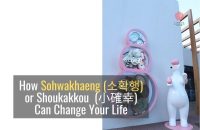
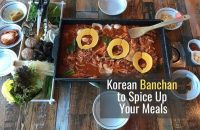

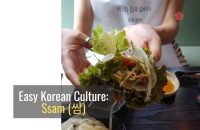

this is a great Korean reference guide!